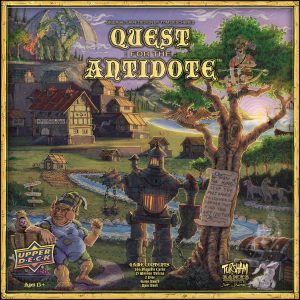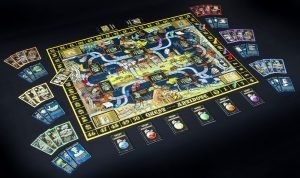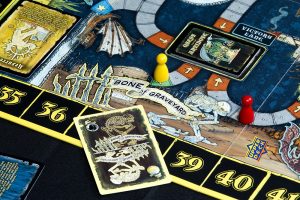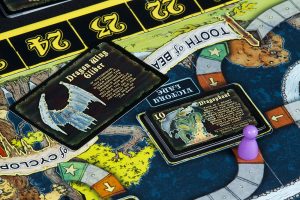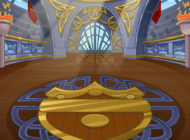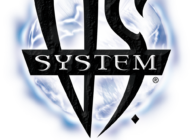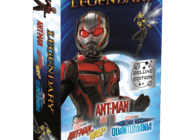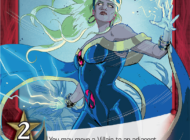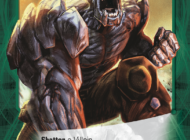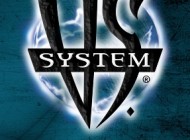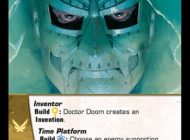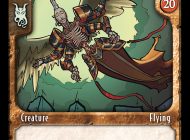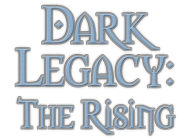Today’s blog post is brought to you by Quest of the Antidote’s Designer, Tom Deschenes.
Many of the great epics in Western literature – The Iliad, The Odyssey, Inferno, and Paradise Lost to name a few — start the same way: the narrator, struggling to find the right words to tell the story of a noble hero, raises his voice to the heavens and asks the Muses for inspiration. For centuries, these goddesses of creativity were credited with helping to inspire a number of poets, artists, musicians, scientists, and mathematicians with their “Eureka!” moments. Had I known this process also worked for aspiring board game designers toiling to come up with an idea for a game, I would have thrown my hands to the sky long before I did and begged the Muses for mercy sooner!
I’m assuming most board game designers come up with a concept for a game before deciding they want to publish one. My process was the opposite. On a whim in January 2012, I decided I was going to create my own board game and have it published – I just had no idea what the theme would be or what mechanics it would use. I always like to take on new challenges, though, and after having had an incredibly fun stretch of game nights the year prior, I knew I wanted to create something that could give people as much fun as the games my friends and I had been playing.
Not sure where to start but wanting to take this endeavor seriously, I dedicated several hours a week to studying how to be a game designer. I read The Oxford History of Board Games. I watched Going Cardboard. I listened to every episode of The Dice Tower. I sought out interviews with legendary game designers like Klaus Teuber and Reiner Knizia. No matter how much I studied game design, though, I was having no luck coming up with a theme or a mechanic of my own; however, one piece of advice was turning up everywhere I looked: create the type of game that you would want to play. This, at least, gave me a bit of a starting point.
I knew the following about the types of games that I enjoy playing: 1.) I like “gateway” games that are easy to learn, accessible to casual gamers, and can be played in about an hour. 2.) I appreciate games that balance both strategy and luck so players of varying skill levels can be competitive with each other. 3.) A fun factor is important to me, and I feel a pleasant sense of immersion in games that have strong themes that blend nicely with their mechanics. 4.) I have a blast playing pick-up-and-deliver games – I always feel like I’m embarking on an adventure in those! 5.) I absolutely love “take that” games with their unexpected twists and sneaky betrayals because players are constantly forced to re-evaluate their strategies until the final moments of the game. 6.) Suspenseful race-against-the-clock games always keep me on the edge of my seat with the way they build a sense of impending doom. I knew these were six concrete staples I wanted to incorporate into my game… if I could ever come up with an idea, that is. Even though I now had a solid accounting of what I wanted my game to include, I had no idea how all of these disparate elements would fit together. I pondered this conundrum for months. Fortunately, the Muses took pity on me and decided to pay me a visit – although they came unexpectedly at a rather strange time.
One night, I was in the middle of reading Dracula for graduate school, and the story was starting to get really good: Dr. Van Helsing and his brave associates were searching a graveyard in the dark of night for the tomb of Lucy Westenra. Van Helsing had a feeling that his former patient had been bitten by Dracula before she died and was now un-dead, leaving her tomb at night to feed on the innocent children of the town. It was a tense scene as Van Helsing, and his men ventured across the dark and creepy graveyard in search of a vampiric Lucy, racing to find her before sunrise, and not knowing what they would find behind this monument or that gravestone. Suddenly, as if a Muse had whispered in my ear, my head shot up from the book, and I grabbed for a nearby pen and scrap of paper as I began frantically sketching a game board and jotting down notes. I had no idea where these visions and thoughts were coming from – the moment was almost reminiscent of those scenes in horror movies where an old crone with psychic powers begins to scribble down messages from dead spirits as her eyes roll back in her head and she convulsively mumbles gibberish.
Within moments, as if the Muses had taken control of my pen, I was looking down at a piece of paper that outlined a fun-looking, fantasy-themed, suspense-filled, half-luck / half-strategy, part-“take that,” part-pick-up-and-deliver, all race-against-the-clock, gateway game: QUEST FOR THE ANTIDOTE! In Quest for the Antidote, players would be “poisoned” and would have to venture out across a dark and dangerous landscape in search of their antidote items, battling vile monsters and dodging wicked traps along the way, all while racing to get back to the apothecary’s hut in the center of town to be cured. Being poisoned, though, players would naturally get weaker and weaker whenever they engaged in combat or sprinted down a perilous pathway, and sometimes players would meet their doom by running out of breath (i.e., life) before they could cure themselves. With this outline in place, I then populated the world with a host of varied monsters, each with their own unique story and each feeling as though they belong in this wild fantasy realm – a realm I determined would be ruled by the mad “Poison King” of Greek antiquity, King Mithridates. Next, I added in meddling cards so players could hinder one another in their individual quests, thus keeping the game close and competitive, but I also incorporated loot cards in the far reaches of the board and drop cards associated with high-level monsters to give players some valuable rewards and advantages… and to offset any bad luck, they may be encountering with their dice rolls. Less than 48 hours later, I had a fully playable poster-board and clip-art prototype, and after a few months of play-testing and balancing the monsters, loot, drops, and meddling cards – and determining exactly how much “breath” a savvy player would need to win the game while just barely surviving — the foundations of my game were in place!
It really came to life, though, when Scott Sherman came on board as the sole artist on Quest for the Antidote. Scott was a recent college graduate with an incredible talent for art and an impressive portfolio, and he and I worked well together. Scott was able to bring all of my wacky ideas to life through his fantastical artwork, and with Scott’s help, I had a fully developed, beautiful, professional-grade board game roughly 18 months later. Over the next few years, I pitched my game to a select group of leading game companies, and I found the perfect publishing partner in Upper Deck, a world leader in gaming and collectibles. With one foot in the mass market and one foot in the hobby game industry, I realized that Upper Deck was uniquely positioned to help Quest for the Antidote flourish across the world and across mediums. Now that the game is on store shelves around the globe, I am excited to see how far we can push this new brand and these quirky characters.
If you are looking for the new “must have” gateway game of 2017, and if you’re seeking a game that is both suspenseful and laugh-out-loud funny, search no further. With its retro yet refreshing vibe, Quest for the Antidote is likely to be a hit with gamers of every age and skill level. Give it a try (if you dare), and good luck in your… QUEST FOR THE ANTIDOTE!
If you want to learn more about Tom, you can read an interview with him here.
You can pick up a copy of Quest for the Antidote here or at your local game store now!







